More ingenious Italian military engineering
As we have seen from previous explorations of Italian Northern Defensive Line at Menaggio and Corenna on Lake Como, in 1916 the Italians were worried about a potential invasion through Switzerland. It was not actually the Swiss who were going to invade, but hypothetically the Germans who it was theorized would invade Switzerland to reach northern Italy in support of their Austrian ally.
At the Northern end of Lake Como , the Italians feared that the Germans would cross the Splugen Pass and then head down to Chiavenna from there they would be able to reach the shores of Lake Como, with its road and railway links straight down into the Lombard plain. On the western side of the Lake , the road the Via Regina ran down towards Como. On the eastern side, both road and railway ran down from Chiavenna to Colico and then along the eastern side of the lake to Lecco.
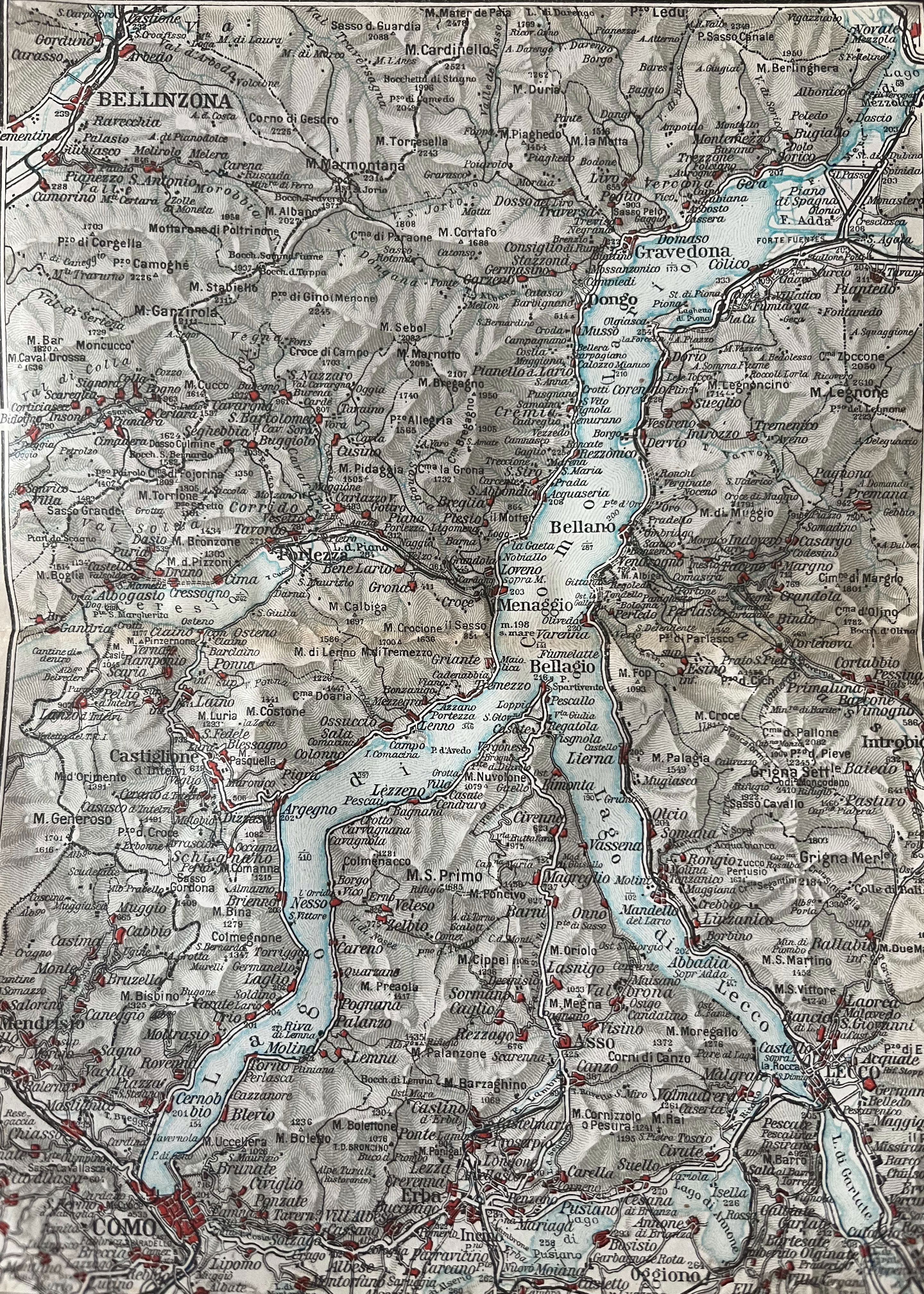
Lake Como. Showing the road and railway network in the 1910s, before construction of the modern SS36
The Italians therefore developed to a cunning plan to impede any German progress on this route. Below Chiavenna, the road and railway emerge at Lago di Mezzola. The lake used to be the northern part of Lake Como, in time the southern end silted up and formed the flood plain , the Piano di Spagna ,until in the end Mezzola and Como became separate lakes. At the top end of Mezzola , at Verceia the road and railway are restricted to a narrow plain by the lake side , with numerous tunnels . Just after Verceia , they both enter a tunnel to pass under a rocky outcrop, the road proceeds little way a long the lakeside and then runs our of space, so it too enters a tunnel section., for a short distance both road and railway in a parallel tunnel. (The modern ss37 enters a tunnel on the left hand (inland ) side of the railway- but since this only constructed in the 1930s – it does not concern us here ).
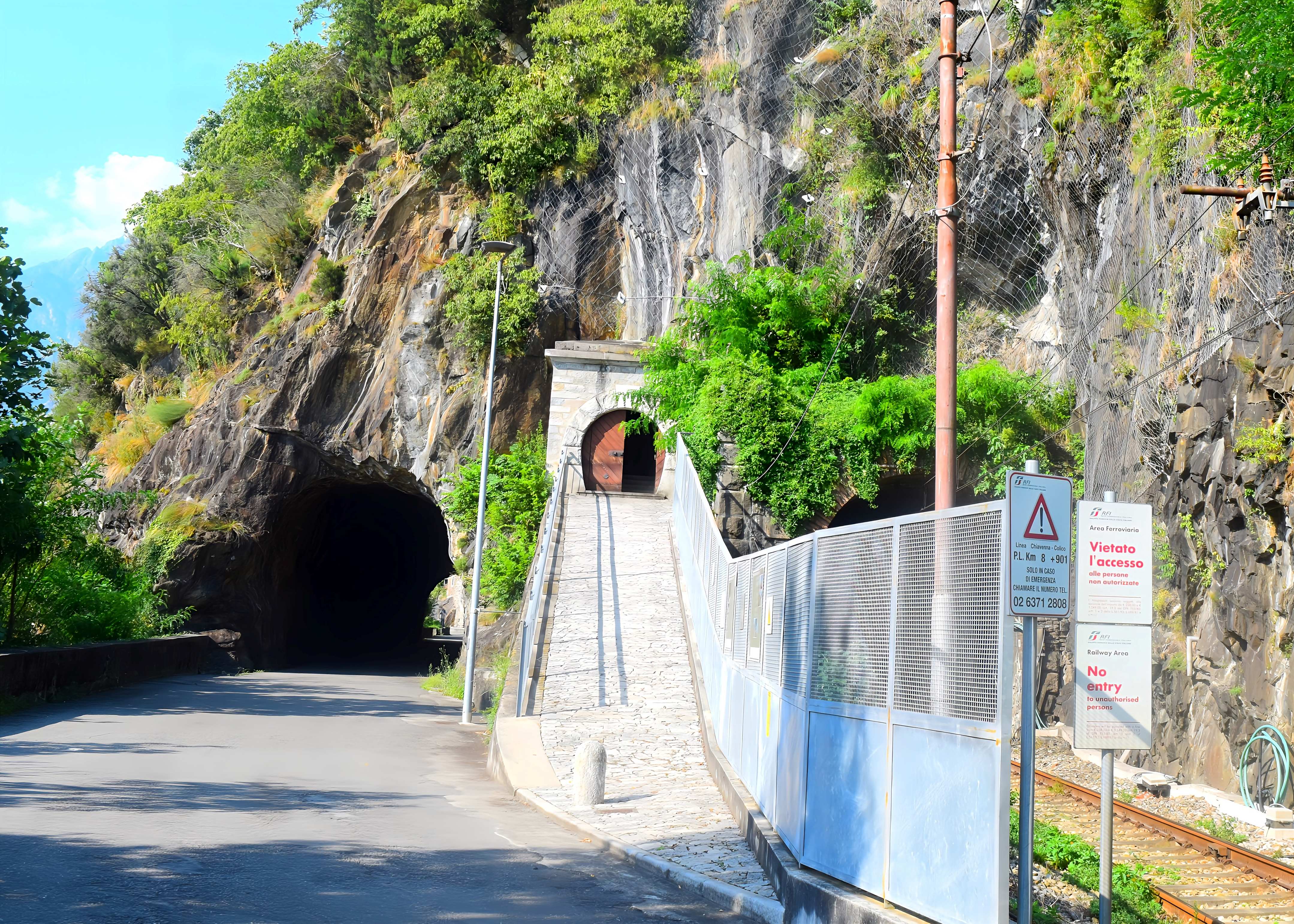
View of the road tunnel and the railway tunnel, with the entrance to the Mine Gallery in the middle
The Italian’s cunning and top secret plan was therefore to blow up the tunnels to deny their use to any enemy . However, it was a bit more nuanced than that, they did not want to destroy their tunnels permanently, just block them temporarily to inconvenience the invading enemy. So they constructed an elaborate tunnel network above the road and railways tunnels, which they would then used to literally bring the roof down, in theory enough to block the tunnels but not to destroy them.
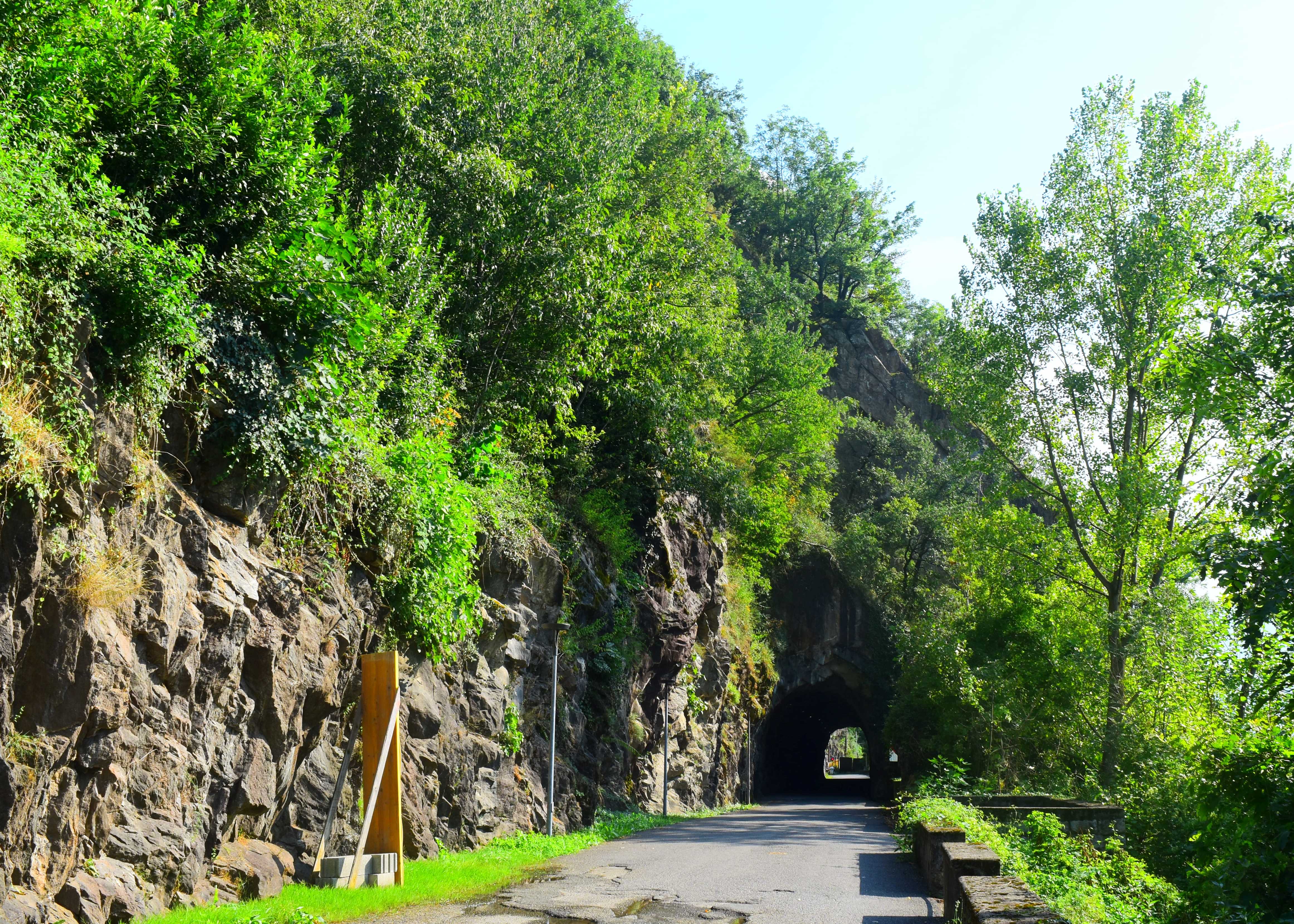
In the 1917, this was the only road between Chiavenna and Lecco Exploding the mine in the gallery above would bring the roof down and block the road
To find the entrance to the mine, you have to follow the via National / via Quatrasso up from the beach at Verceia. With the railway on the left hand side, follow the road around the promontory and then walk through the short road tunnel on the lakeside. As usual in Italy there is no pavement in the tunnel, but it fairly short and without much traffic , so seems safe enough ( but each to his own risk assessment) , once through the tunnel, you stop just before the level crossing and the path up to the Galleria di Mina is right behind you. If it is open the gate is open.
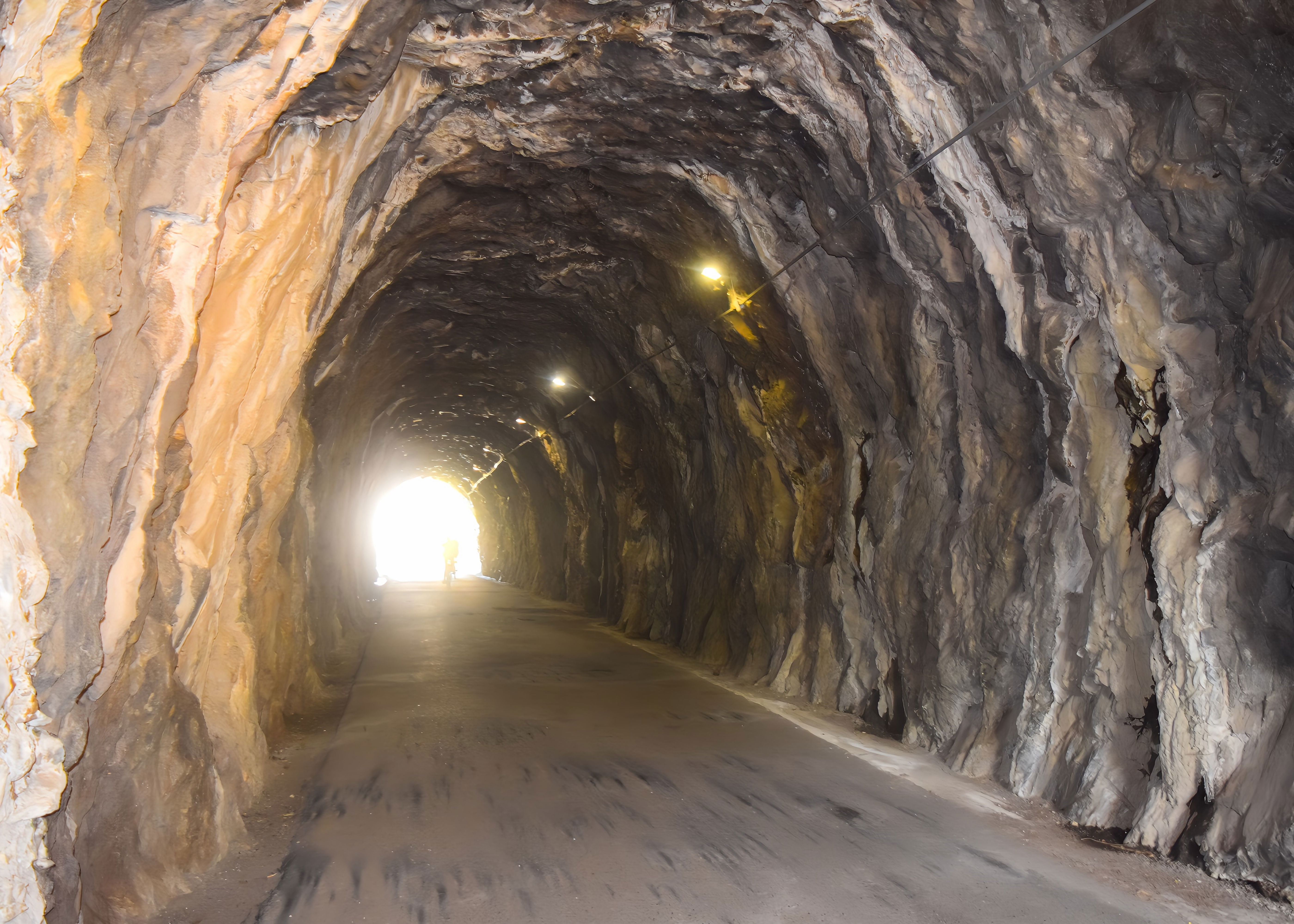
Inside the road tunnel , with the mine galleries above
Although the inner gate may be closed if the guide is on a tour. I had a guided tour * in Italian obviously for Five euros, just me and a very informative young guide.
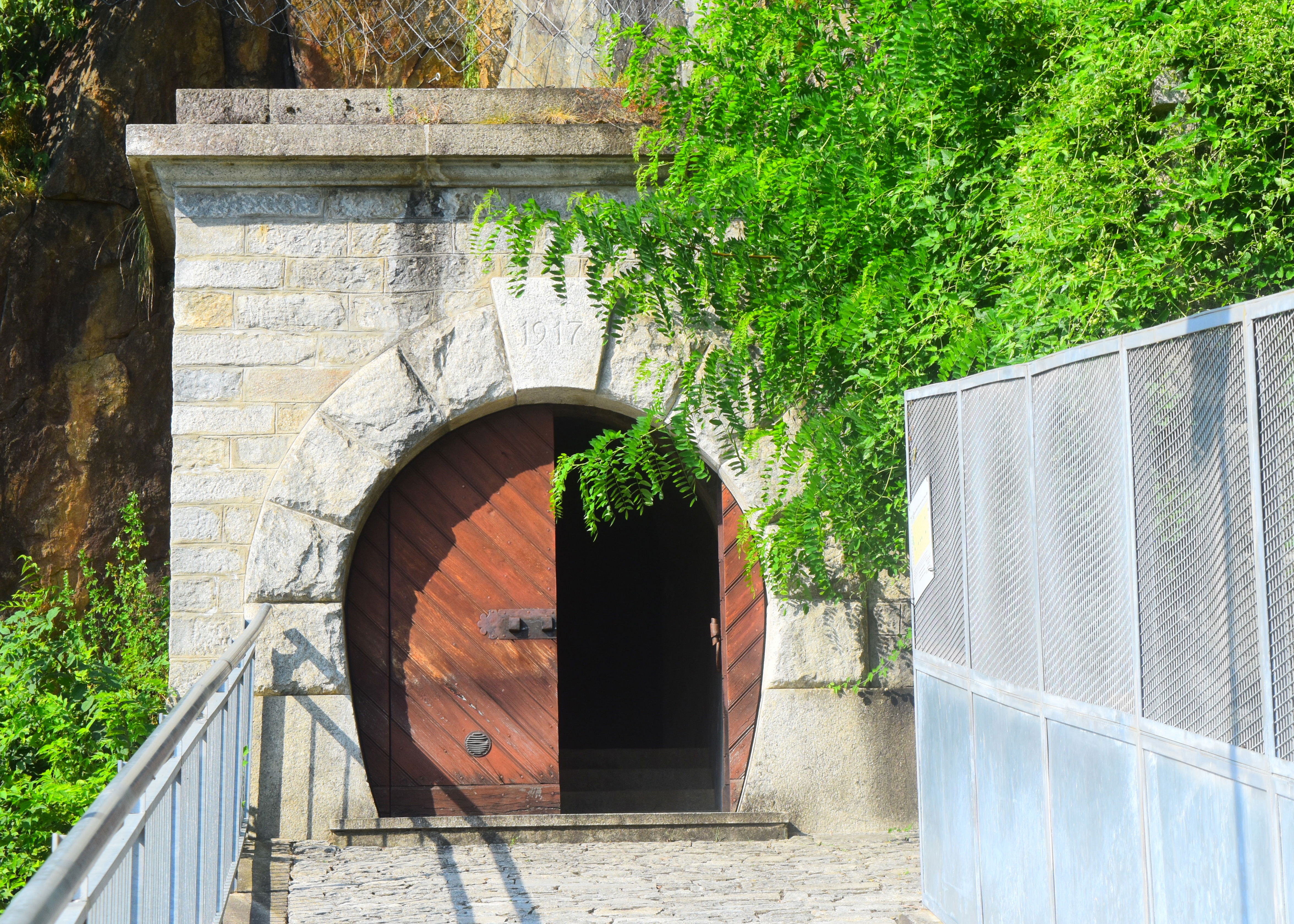
Entrance to the Mine gallery, finished in 1917
The first part of the tunnel network is above the road tunnel, there is then a connecting tunnel to a further extension of the tunnel which is above the railway tunnel. In total there are 16 shafts – eight above the road and eight above the railway, which were filled with an explosive charge and detonated. The galleries and service tunnels have been cut into the bare rock of the hill above and then the tunnel walls have been faced with brickwork.
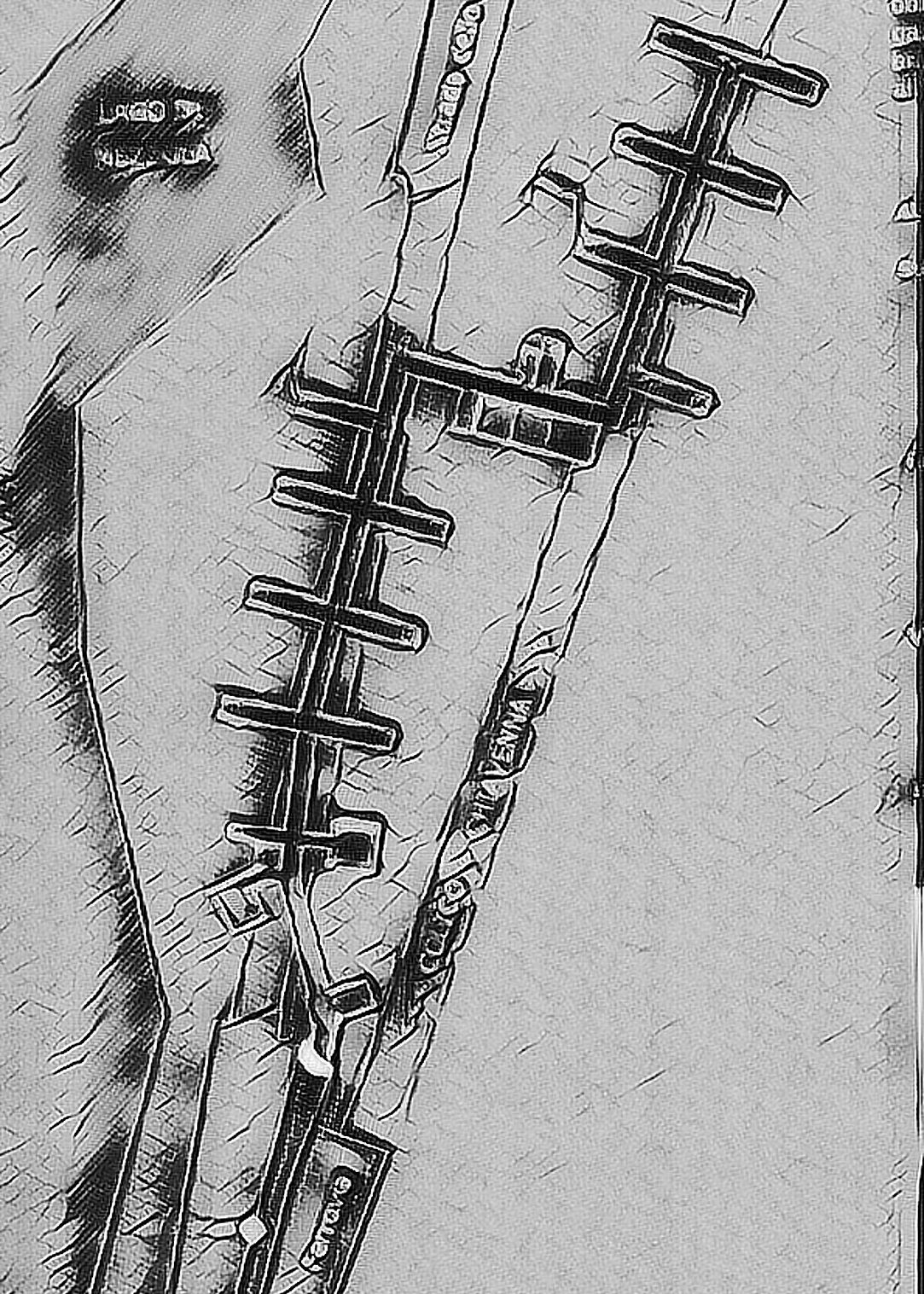
Plan of the inside of the mine gallery, showing the tunnel network above the road and railway tunnels
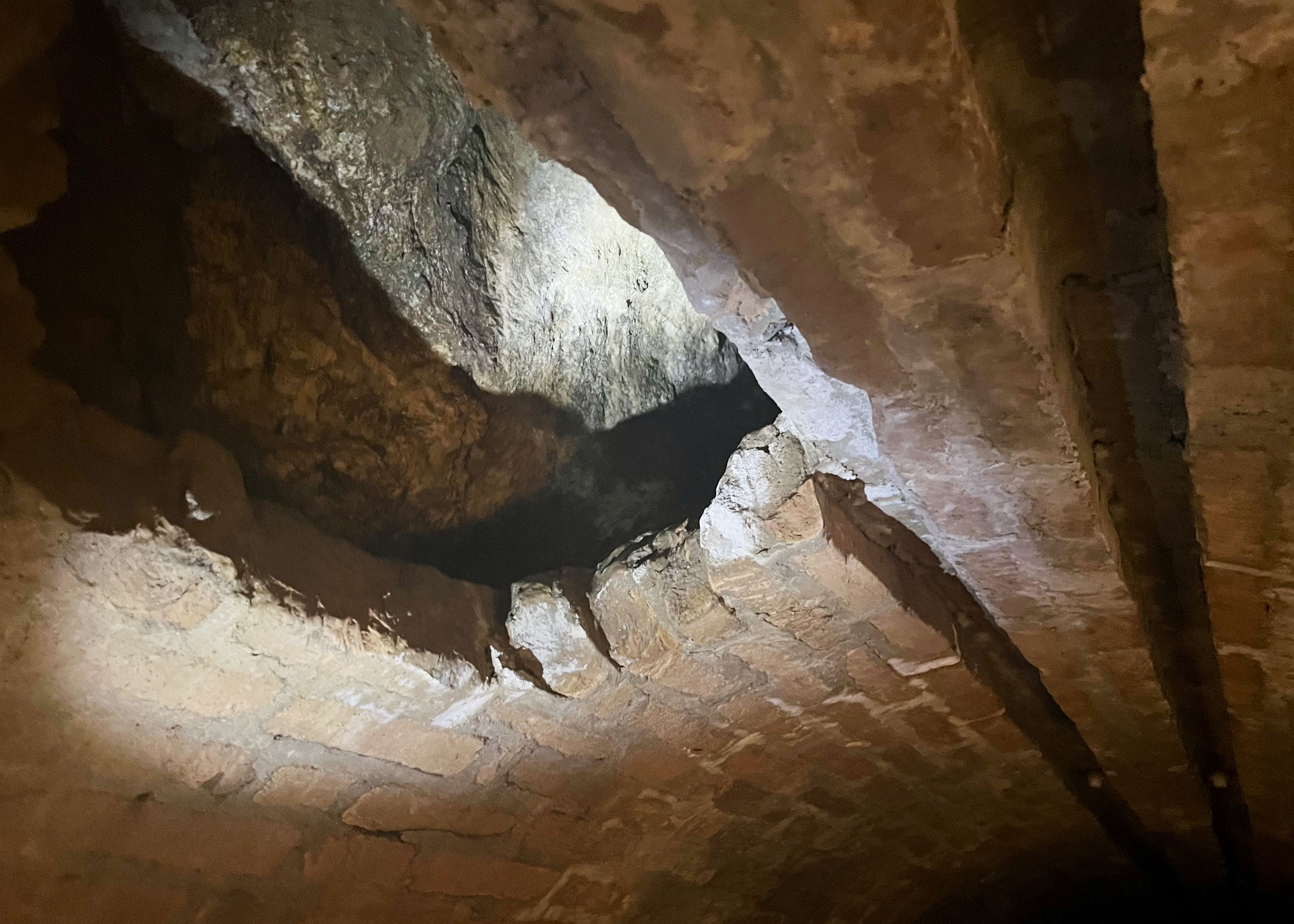
The tunnels were blasted into the bedrock and then faced with brickwork
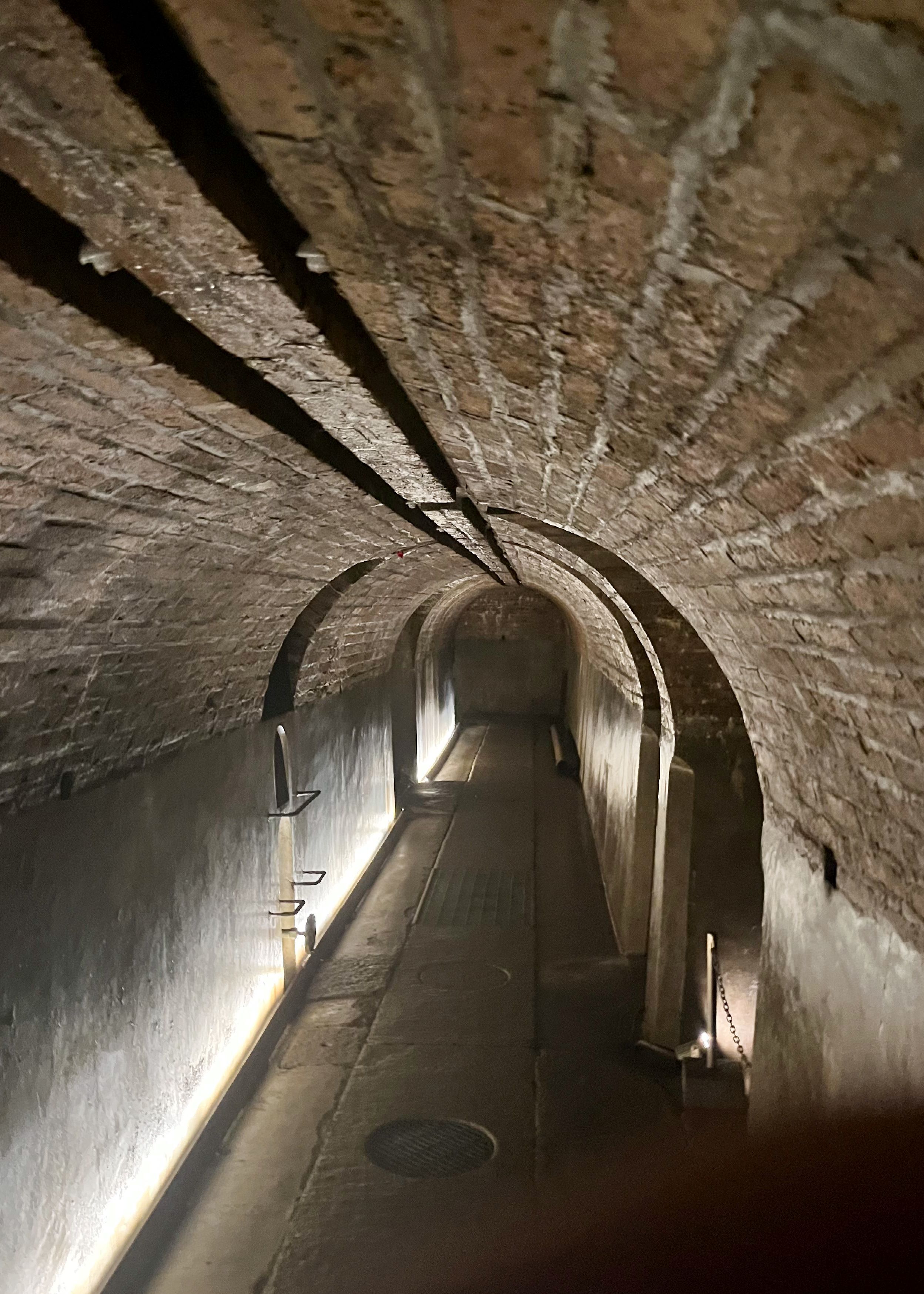
Communication tunnel with space for electric wiring running down the top centre of the tunnel
The shafts fills with water, which was intended to assist the down force of the explosion , bring more rock and debris down onto the road/ railway track below, without bringing the while roof down and destroying the tunnel. It was calibrated to cause just enough damage to block transit on the road The protocol for detonating the tunnel seems obscure.
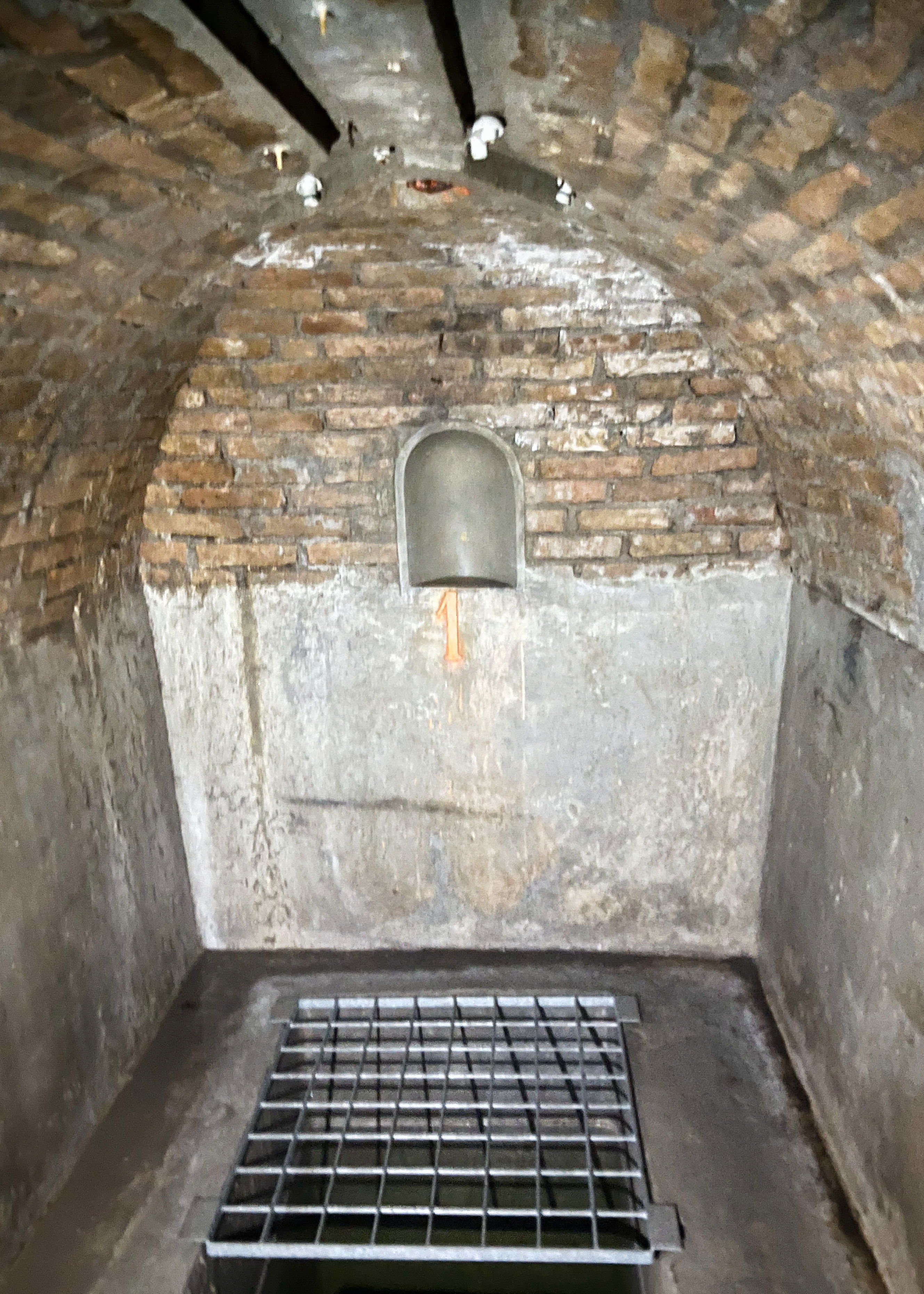
Number 1 mine showing where the explosive charges were to be placed ( below the grille)
Presumably, spotters up in the mountains would notice the German or Austrian army trudging over Monte Spluga and telephone the news down to HQ. Being Italy we assume that the local command was not empowered to make the decision to blow up the tunnel, presumably orders would have to go a local HQ and then the Commando Supremo at Udine on the frontlines, (or after Caporetto when the Commando Supremo when it had been forced retreat to Padova). Assuming a long chain of command, it would have perhaps taken some time to authorize the detonation of ther tunnels, Meanwhile four Italian soldiers were crammed into bunk beds in the small orderly room , waiting or orders . I wonder how well they slept, l next door to ne of the powder magazines. Hopefully they abided by the no smoking rules.
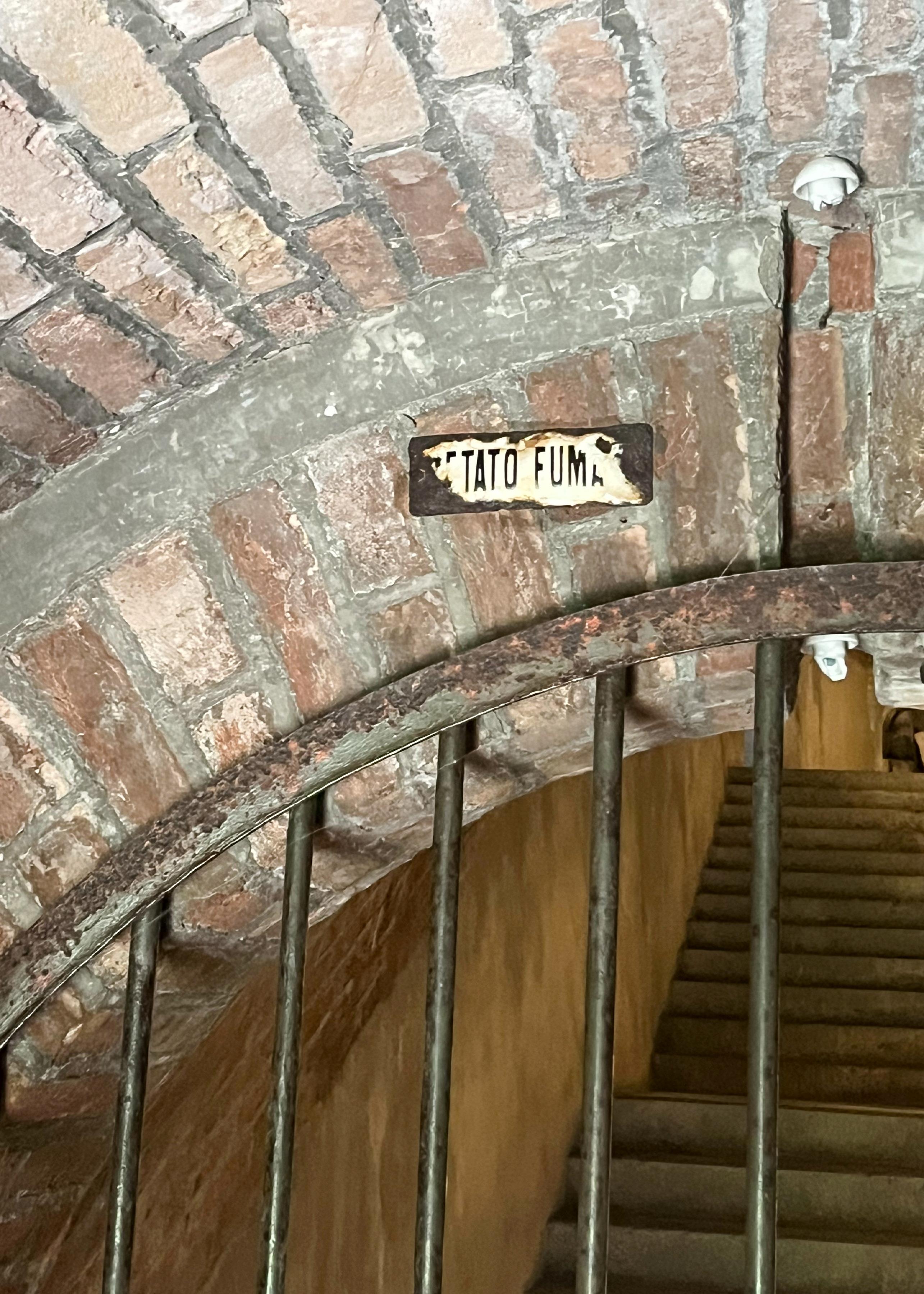
No smoking was probably advisable with all the gunpowder stored inside
What what the men would do if the order to detonate the mine came through is unclear. Presumably they would have high tailed to some safe distance, Despite the risks of sleeping next to a room full of gun powder it was quote a nice place to spend the war. Miles from the frontline and with a pleasant lakeside location. I suppose many would have considered a choice if rather boring posting . a chance to bathe in the lade, sunbathe, write on the walls and be blown up by the smallest spark.
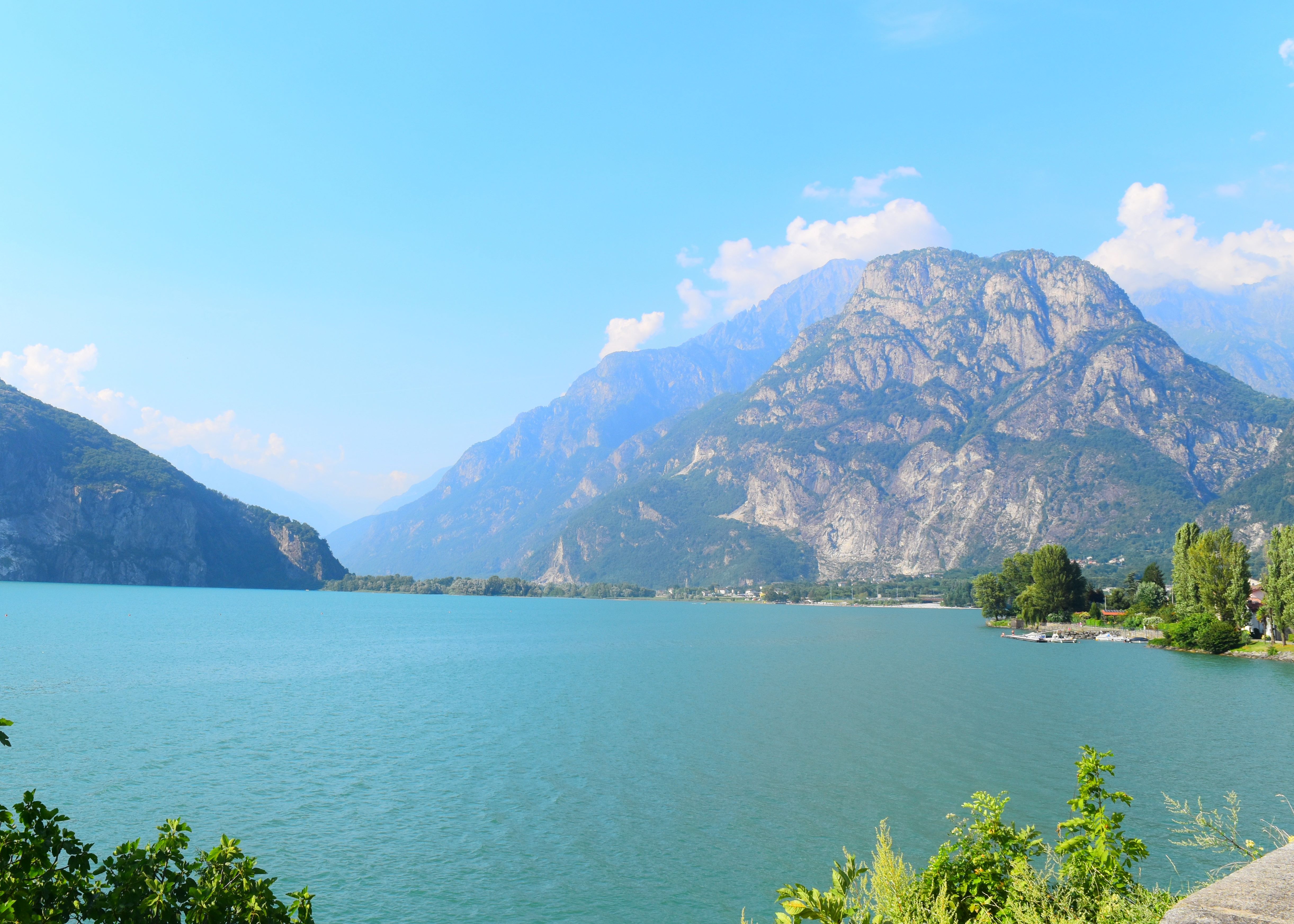
At least the soldiers manning the mine , had a nice view when they went outside
Conditions inside the tunnel must have been damp – today it is pleasantly cool inside and absent any pumps or ventilation, the walls are dripping with water. Stalactites are forming on te ceiling as the water permeates through the risks above. If course, extreme dampness was bot going to help keep the powder in good condition and so the Italian engineers made some ingenious alterations to reduce the dampness, creating curved and uneven floors – or groove n the concrete to keep the air circulator . Any Germans or Austrians who managed to bypass the block and for further down the road would then have been exposed to enfilading fire from the positions at Corenno which looked down on the via Spluga. There was also an equivalent mine gallery at Brienno in the opposite side of Lake Como, that one would have been used to bring the roof down ion the tunnel for the Via Regina, this blocking that side of the lake as well.
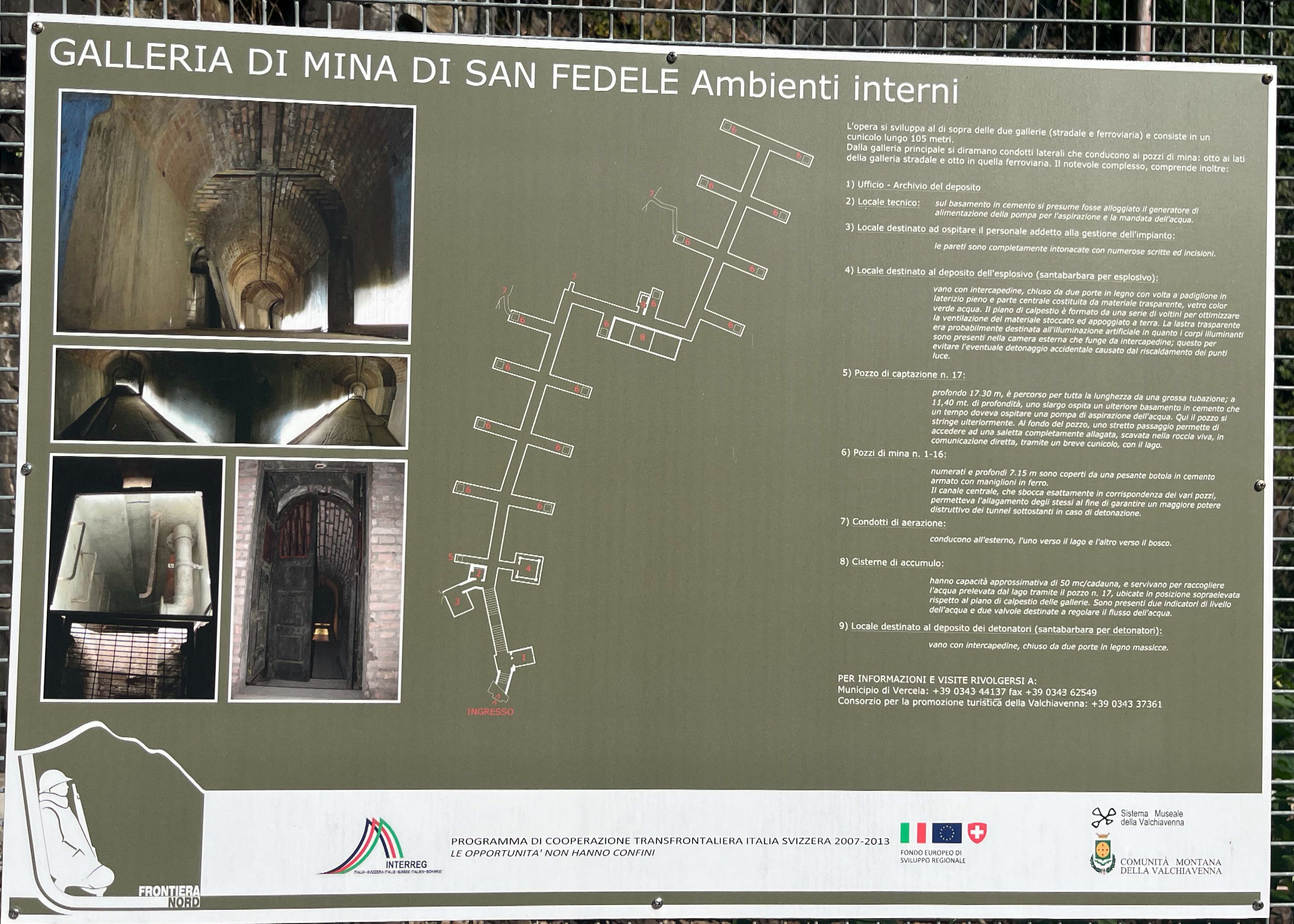
Although only rarely open - worth a visit
The Germans never arrived and fortunately the Italians never had cause to see whether their mine worked or not . After the war, the tunnel fell into disuse- all the valuable metal pipes, electrical wiring and fittings, seems to have been looted over the years. Despite the dangers local kids apparently found ways get in and explore the old tunnels .Finally it was restored and reopened to the public , although on a strictly limited basis.